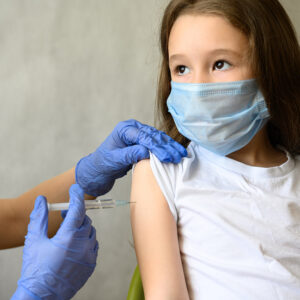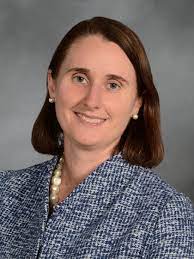As experts in pediatric infectious diseases, vaccination and epidemiology, we are on the frontlines when it comes to COVID-19 and children. Collectively, we have cared for hundreds of children with severe cases of COVID-19, experiencing firsthand the complexity of caring for a child battling this novel illness and the agony of seeing a child succumb to its ravages.
We cannot stay silent as we witness the barrage of misinformation deterring parents from vaccinating children 5 years old and older against COVID-19. Americans need facts, not agendas.
First, the sheer number of very sick children should be every parent’s wake-up call.
The vaccination data are alarming. As of March 9, only 27 percent of U.S. children between the ages of 5 and 11 and 56 percent between 12 to 15 are fully vaccinated, leaving tens of millions of children still unvaccinated. And while most of those children who will get COVID-19 will have mild to moderate illness, the small percentage of this huge pool of unvaccinated children that will become severely ill translates into large numbers of children needing specialized care.
COVID-19 has already resulted in the tragic deaths of more than 1,000 children in the nation and put a major strain on the healthcare system with children spending more than 550,000 days in hospitals. More children have died of COVID-19during the two years of the pandemic than died from influenza between 2010 and 2016. The many hospitalized children have overwhelmed hospitals, doctors and healthcare staff. And it’s not just admitted children that need care; our clinics have received hundreds of calls from parents concerned about the effects of long COVID on their children.
Second, America has an unequivocally safe vaccine available for children.
The Food and Drug Administration has approved the Pfizer/BioNTech vaccine for children 5 years and older — and the agency has done so because of its superb safety record. In children 5-11 years old, there are no reports of major adverse events above what is typically found in the general population. In children 12-15 years old, the rare early reports of myocarditis in males occurred with shorter spacing of doses (three weeks). With the longer spacing now recommended (eight weeks), rates should be no higher than in the baseline population, as occurred when longer spacing was used in adult males age 18-24 years.
Third, the Pfizer/BioNTech vaccine is highly effective in children.
Trials of the vaccine have shown 100 percent effectiveness in preventing infection in children 12-15 years old and 91 percent effectiveness in children 5-11 years old.
Although a recent as-yet unpublished study showed a decrease in vaccine effectiveness in children against Omicron infection, this and another study still showed protection against hospitalization (73 percent to 90 percent in older children and 48 percent to 74 percent in younger children). More precise estimates will come with further research, but these two studies strongly support the effectiveness of COVID-19 vaccines against severe illness, the most important measure of protection. A third dose in children is likely to improve protection even more.
Finally, vaccinating now is planning for the future.
COVID-19 is not going away anytime soon. Although the Omicron wave has faded and cases are decreasing across the country, other variants will emerge. One example is the new BA.2 variant (the so-called “stealth Omicron”), already taking hold in many parts of the world. The good news is that the current lull in the United States provides an invaluable opportunity to prepare for future variants by vaccinating as many children and adults as possible.
These are the facts, and they must reach every community. Black, Hispanic and Native American children have been at much greater risk of death from COVID-19 compared to White children throughout the pandemic, yet have lowervaccination rates. The lower vaccination rates signal a glaring inequity in vaccine education and distribution, and it is essential to engage with these communities in combatting vaccine hesitancy and increasing vaccine access.
American parents rely on science when it comes to their children. Consider widespread adoption of safety measures such as car seats, seatbelts and the usual array of childhood vaccines. In doing so, they have saved the lives of hundreds of thousands of children and avoided millions of hospitalizations. By every metric a parent should consider for the wellbeing of their child, the vaccine is safe and effective, with the benefits far outweighing any risk.
From where we stand in hospital wards and research labs, there is neither a reason to hesitate nor a moment to lose.




